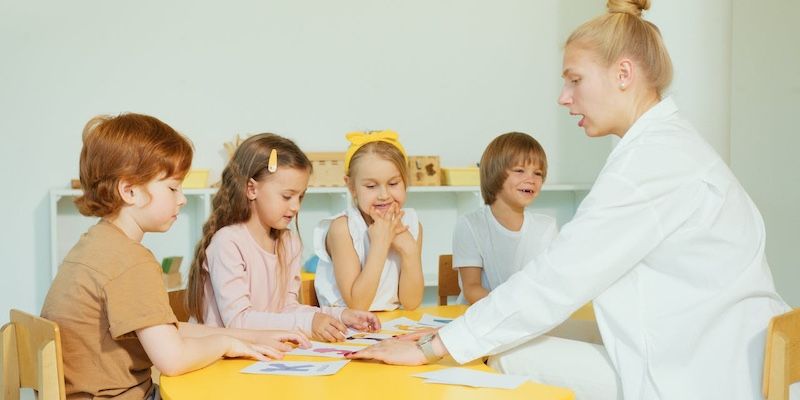Learning Through Reflection: 20+ Questions to Inspire Others
 New research is uncovering the power of the reflective mind to help us with lifelong learning (Fleming, 2021a).
New research is uncovering the power of the reflective mind to help us with lifelong learning (Fleming, 2021a).
It seems that our reflective ability to think about our thinking, known as metacognition, can provide a boost in all sorts of situations, especially when acquiring knowledge and skills (Fleming, 2021a).
While there was a time when we believed that rote learning, memorizing information based on repetition, was the path to good education, it now appears insufficient for our rapidly changing world, where we constantly need to get to grips with new ideas (Fleming, 2021b).
In this article, we explore the potential of reflection to help us understand how to think and learn and some activities that can help.
Before you continue, we thought you might like to download our three Positive Psychology Exercises for free. These science-based exercises will explore fundamental aspects of positive psychology including strengths, values, and self-compassion, and will give you the tools to enhance the wellbeing of your clients, students, or employees.
This Article Contains:
The Role of Reflection in Learning
Humans are very good at explaining what they do and why. Self-awareness is, after all, one of our defining features. The capacity to do so relies on our ability to reflect on ourselves, such as how we think, feel, perceive, and decide things in our lives (Fleming, 2021b).
Reflection and introspection in learning are crucial, and the more accurate, the better. Both under- and overconfidence in our knowledge and abilities can lead us to fail to perform at our best.
For example, thinking we know something well when we don’t can leave us unprepared and oblivious that we can’t answer the question or perform the task. Conversely, never feeling we know enough may stop us from engaging in an activity or interacting with a group (Fleming 2021b).
Why is metacognition important?
Perhaps surprisingly, it is only in recent years that metacognition has been considered a valid and valuable subject for research (Fleming, 2021a). After all, doesn’t it seem impossible that the brain can peer in on itself? Isn’t this a prerequisite for self-reflection?
In fact, the brain can and does.
Findings from neuroscience and cognitive science research prove that the brain is not a single, indivisible organ. The brain is a collection of networks and has the capacity to think about its own thinking (Fleming 2021a).
In an ever-changing world where people live longer, change jobs more frequently, and need new skills almost daily, learning is indeed lifelong. Being fixed in what we know and not recognizing where we have scope to develop is unhelpful and even harmful.
Understanding metacognition and using our reflection skills can help us in education and enhance our ability to acquire the skills we need throughout life. Crucially, it improves “the way we make decisions about how, what, and when to study,” says Stephen Fleming (2021b, p. 116), a leading expert in neuroscience.
So how can reflection help us learn?
As it relates to learning, metacognition begins with us forming beliefs about how best to learn and where we should focus our attention (Fleming, 2021b). After all, it’s no good reading about the history of ancient Greece if the exam is on the Industrial Revolution.
Once we have learned what is needed, we can begin to understand how we should use or apply that knowledge. It could be an exam, a presentation at work, or a conversation with someone.
Fleming (2021b) lays out several important points to note when we look at learning from a metacognitive perspective:
- A considerable amount of research suggests that a preferred learning style (visual, written, auditory, etc.) may be a myth. Studies of learners who believed they had a pictorial learning style versus those with a verbal preference found their confidence was usually misplaced.
- It is crucial that we become aware of what we don’t know. Such reflective insight is helpful because it directs our focus where it is most needed. Sadly, we tend to choose what is more straightforward over the material or approach that will give us the most significant gains.
- Our overall confidence in how we perform is closely linked to our metacognitive bias. What this means is that even an unrealistic boost in our self-efficacy can lead to better performance.
Research has shown that metacognition, such as reflecting on what we do (and do not) know, what we need to learn, and the most appropriate learning approach, reduces anxiety and stress levels while boosting our results (Fleming, 2021b).
In the following sections, we look at how reflection can help teachers share knowledge and how students can utilize methods and questions to elevate their learning.
Fostering Reflection: 4 Skills for Teachers

They studied teachers nominated by colleagues, professors, and educators as being “very adept at getting their students to think” (Ritchhart & Church, 2020, p. xvii).
What they found was simplified down to a three-word mantra for both teaching and learning:
Making thinking visible is vital.
Using a set of thinking routines, it is possible to “create classrooms where thinking is valued, visible, and actively promoted as part of the day-to-day experience of all members” (Ritchhart & Church, 2020, p. xv).
Teachers who encourage students to reflect on the process of learning and thinking create environments that (Ritchhart & Church, 2020):
- Cultivate deeper learning
- Foster engaged and motivated students
- Transform the typically fixed roles of teachers and students
- Improve the outcome of learning
- Change people’s thinking dispositions
And this deeper learning occurs at the point where the following three vital concepts meet (Ritchhart & Church, 2020):
- Mastery – the opportunity to develop an understanding
- Identity – the opportunity to connect with what was being studied and develop as a learner
- Creativity – the opportunity to produce something personally meaningful.
It is perhaps no surprise that this links closely to Ryan and Deci’s (2017) notion of intrinsic motivation being greatest when people are most engaged and feeling competent, related, and autonomous.
So how do we cultivate engaged students?
While thinking is typically an internal, seemingly inexplicable, process, it can be made visible through a set of reflective practices (Ritchhart & Church, 2020).
- Questioning:
Great questions drive and make visible learning and thinking. Facilitative questions such as “What makes you say that?” are sometimes described as magic questions. They encourage the student to reflect, reveal, and engage with their deeper thinking to clarify their ideas. Similarly, “Tell me why” and “What’s your reason for that?” push for further explanation.
Crucially, the creative use of questioning by teachers switches the paradigm. Rather than attempting to transmit what is in their heads to their students, the goal becomes to understand the student’s thinking.
Such questions are not like the typical review questions used in a traditional class that simply require a recall verbatim of what the teacher said. They can be followed up with questions like “Can you say more about that?” and “I’m not sure I follow. Can you say what you were thinking in a different way?”
- Listening:
It must be clear to students that teachers are truly interested in their thinking and what they are sharing. It gives the student a reason to impart their deeper thinking and present their theories.
The goal and skill of the teacher is to encourage deeper reflection by the student, drawing out their perspectives, feelings, and understandings regarding a situation or an idea.
Hearing the challenges, understandings, and even struggles within the student’s thinking, the teacher can find opportunities to explore and explain in greater detail without the student becoming overwhelmed or shutting down.
- Documentation:
Thinking can seem like a messy process. However, even in the early stages of understanding and learning, documenting (e.g., observing, recording, interpreting, and sharing) can support the student’s reflective skills and the teacher’s growth.
Documentation is not merely what is captured, but also the act of reflecting on thinking and learning. Perhaps most importantly, when a teacher records the student’s ideas, it shows they have worth and value for future discovery.
Once visible, the students can reflect on their learning and make it a subject of discussion. A great question to set the scene is: “What do I want to capture so that we as a class can return to it later for more careful examination and analysis?” (Ritchhart & Church, 2020, p. 28).
- Thinking routines:
Thinking routines can be shared with students and used as a structure to aid thinking, ultimately becoming a pattern of behavior.
Ritchhart and Church (2020) list eight thinking moves that are valuable for building understanding:
- Observing closely and describing what is there
- Building explanations and interpretations
- Reasoning with evidence
- Making connections
- Considering different viewpoints and perspectives
- Capturing the heart and forming conclusions
- Wondering and asking questions
- Uncovering complexity and going below the surface of things
The teacher’s skill is in recognizing the type of thinking that will help the student engage with particular content.
The aim then is to avoid the following three teaching mistakes (Ritchhart & Church, 2020):
- Focusing on correctness rather than thinking
- Seeing the task as work rather than a chance to explore
- Weak content that doesn’t provide an opportunity for thinking
11 Best Questions for Kids and Students
“Productive inquiry depends on good questions” (Ritchhart & Church, 2020, p. 98).
Many approaches can stimulate reflection within learners, and often they begin with students asking themselves about their understanding.
The following approaches can be helpful (Ritchhart & Church, 2020).
Main–side–hidden
A valuable approach for examining a document, article, story, or video is to reflect on its content and identify and explain the following:
- What is the main (or central) story being told?
- What are the side stories? There could be other issues or interesting events engaging the side characters.
- What is the hidden story? Perhaps there is a narrative happening beneath the surface.
This exercise is a practical way to engage more deeply with the story and can be completed in a group environment or as a piece of homework.
Beauty and truth
When a story has been read or listened to, the student can gain further insights by reflecting upon the events and points covered, especially when the subject is complex.
Ask the following questions:
- Where can the beauty within the story be found? What is appealing or beautiful?
- Where can the truth be found in the story? What are the realities of the situation?
- How might beauty reveal the truth? How and where does beauty bring something to light?
- How might beauty conceal the truth? Where does beauty obscure truth?
Remember, reflection is not about right and wrong answers, but rather the exploration of ideas and thinking.
Take note
Often in lectures, students spend the entire time writing furiously without the capacity to think about what is being presented or engage with the material.
Instead, consider the following questions in advance of the lecture or presentation. Reflect on them during the knowledge sharing and answer each one as fully as possible.
- What was the most important point?
- What did you find most challenging, inspiring, difficult to understand?
- What question would you most like to discuss?
- What is something you found interesting?
4 Fun Ways to Cultivate Reflection

Try out some of the following fun activities to cultivate reflection (Ritchhart & Church, 2020; Peters, 2018):
1. Start a hobby
Learning can occur in many forms and situations. Starting a new pastime such as playing tennis, learning to paint, riding a horse, or listening to new types of music can provide a fun opportunity to reflect on what and how you are thinking and learning.
2. Look after a pet
Taking care of your own or someone else’s pet requires learning about the animal’s needs and how to meet them. Think of the different ways you have learned about the animal, such as talking to the owner, reading a book, or watching a program on TV. What do you know, and what do you not yet understand? How could you find out more information?
3. Three things
Learning new things can be fearsome. You may worry that you can’t do something even before you try. Make a list of three things you would say to a friend who was feeling that way. Reflect on how these points apply to you and what you could do to help yourself.
4. Practice reflection in groups
Reflection is a skill, and like any other, it can be learned. Watch a short comedy movie or cartoon – the sillier the better. Give each person a pad of sticky notes and as fast as possible, write down any thoughts, questions, and feelings about what you have watched.
Stick each note on a wall or board and find as many ways as possible to group them.
Questions to Ask Older Students
Metacognition and reflection, in particular, are incredibly important to the act of learning (Fleming, 2021b).
The following 10 questions can be used with adolescents or adult learners after reading, learning, or listening to a topic or story to stimulate learning (modified from Ritchhart & Church, 2020):
- What do you think the author or speaker meant by… ?
- Can you think of another example of… ?
- What is the author/speaker assuming when they say… ?
- What are the evidence and reasons behind… ?
- Can you think of an alternative point of view on… ?
- What is the effect likely to be of (doing/thinking)… ?
- What’s the takeaway lesson?
- What core idea is the author/speaker expressing?
- How could things be different if … happened?
- What are the strengths and the weaknesses of… ?
PositivePsychology.com’s Reflection Resources
Looking for more tools to help encourage reflection amongst your clients? Check out some of the following resources throughout our blog.
- WDEP Questions worksheet
This worksheet presents a list of questions about what a person wants and actions to pursue it, helping clients arrive at a plan for what to do next. - Things I Love
This exercise invites a group of participants to share and discuss the things they love, encouraging self-reflection while nurturing group cohesiveness. - Self-Esteem Journal For Adults
This worksheet presents a series of journaling prompts that inspire reflection on one’s best attributes and positive aspects of life. - 87 Self-Reflection Questions for Introspection [+Exercises]
For even more questions to encourage a greater depth of introspection, check out our dedicated article featuring 87 self-reflection questions.
If you’re looking for more science-based ways to help others enhance their wellbeing, this signature collection contains 17 validated positive psychology tools for practitioners. Use them to help others flourish and thrive.
A Take-Home Message
Metacognition is thinking about our thinking; reflection, in particular, is crucial to successful lifelong learning. Most importantly, it helps us recognize what we know and what we don’t and guides us toward the right things to learn next (Fleming, 2021b).
Not only that, reflecting on what we believe others know versus what we think they should know provides essential feedback for the gaps in our own learning.
Understanding and reflecting facilitate teaching and learning and can create self-aware students and, indeed, teachers (Fleming, 2021b).
Questioning ourselves and others, listening well, and capturing thinking are the constituents of reflection and can be practiced. Ultimately, as we become better at recognizing our learning processes, we become more adept at acquiring new skills and knowledge and ready ourselves for lifelong engagement in education and self-development.
Try out some of the techniques, questions, and exercises on yourself or those you are educating, and observe the benefits of a more reflective, self-aware mindset on your ability to share and embed new concepts and approaches.
We hope you enjoyed reading this article. Don’t forget to download our three Positive Psychology Exercises for free.
- Fleming, S. (2021a, May 5). How to boost your self-awareness and make better decisions. New Scientist. Retrieved May 17, 2021, from https://www.newscientist.com/article/mg25033332-300-how-to-boost-your-self-awareness-and-make-better-decisions/
- Fleming, S. M. (2021b). Know thyself: The science of self-awareness. Basic Books.
- Peters, S. (2018). My hidden chimp: Helping children to understand and manage their emotions, thinking and behaviour with ten helpful habits. Studio Press.
- Ritchhart, R., & Church, M. (2020). The power of making thinking visible: Practices to engage and empower all learners. Jossey-Bass.
- Ryan, R. M., & Deci, E. L. (2017). Self-determination theory: Basic psychological needs in motivation, development, and wellness. Guilford Press.
Let us know your thoughts
Read other articles by their category
- Body & Brain (49)
- Coaching & Application (57)
- Compassion (26)
- Counseling (51)
- Emotional Intelligence (24)
- Gratitude (18)
- Grief & Bereavement (21)
- Happiness & SWB (40)
- Meaning & Values (26)
- Meditation (20)
- Mindfulness (45)
- Motivation & Goals (45)
- Optimism & Mindset (34)
- Positive CBT (28)
- Positive Communication (20)
- Positive Education (47)
- Positive Emotions (32)
- Positive Leadership (18)
- Positive Parenting (4)
- Positive Psychology (33)
- Positive Workplace (37)
- Productivity (16)
- Relationships (46)
- Resilience & Coping (36)
- Self Awareness (21)
- Self Esteem (38)
- Strengths & Virtues (32)
- Stress & Burnout Prevention (34)
- Theory & Books (46)
- Therapy Exercises (37)
- Types of Therapy (64)





What our readers think
do you have the full reference list to this article?- interested in learning more.
Hi Suzie,
If you scroll to the very end of the article, you will find a button that you can click to reveal the reference list.
Hope this helps!